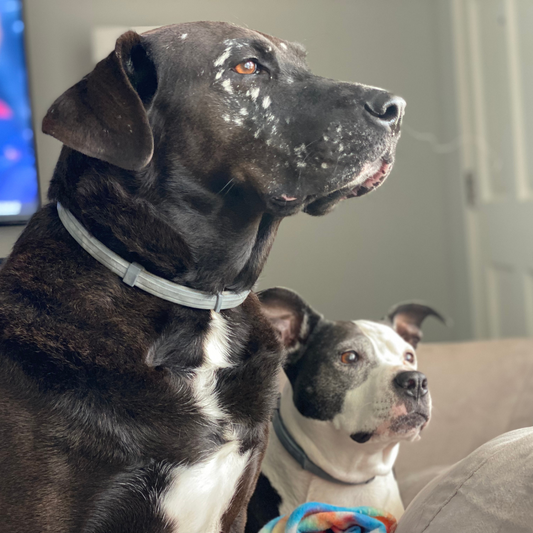Preventing Dehydration in Dogs: Tips on Hydration Strategies
Share
Dehydration in dogs is a serious condition that can be challenging to detect but is crucial for maintaining your pet's health. Without proper attention, dehydration can lead to severe consequences, including heat stroke. Learn how to recognize the signs of dehydration and keep your dog well-hydrated, especially during the hot summer months.
Understanding Dehydration in Dogs
Why Dehydration Matters
Dehydration in dogs can quickly escalate into a life-threatening situation if not addressed promptly. Unlike humans, dogs do not sweat to regulate their body temperature, making them more susceptible to heat-related issues. Ensuring your dog has access to plenty of water daily is essential to prevent dehydration and heat stroke.
Tips for Preventing Dehydration
To keep your dog hydrated and healthy throughout the summer, follow these tips:
-
Provide Constant Access to Fresh Water
Always ensure your dog has a clean and full water bowl available. Dogs need regular water intake, especially during warm weather. -
Avoid Peak Heat Hours
Limit outdoor activities during the hottest parts of the day. If you must go outside, ensure there is ample shade and minimize physical exertion. -
Use Cooling Products
Consider using cooling mats or vests to help regulate your dog's body temperature.
How to Detect Dehydration in Dogs
Key Signs of Dehydration
Dehydration can be subtle and may not be immediately obvious. Watch for these signs:
- Vomiting
- Sunken, Dry Eyes
- Dry Nose
- Dry, Sticky Gums
- Thick Saliva
- Refusal to Eat or Drink
Testing for Dehydration
To assess your dog's hydration level, perform these simple tests:
Pinch Test
-
Pinch and Release
Gently pinch the skin on the back of your dog’s neck or between the shoulder blades. Release and observe how quickly the skin returns to its normal position. If the skin remains tented, it may indicate dehydration.
Capillary Refill Test
-
Press and Observe
Press on your dog's gums in a pink area and observe the color change. The gum should turn white and quickly return to pink. A slower return to pink may signal dehydration.
Rehydrating Your Dog at Home
Encouraging Water Intake
If your dog is reluctant to drink water, try these strategies:
-
Multiple Water Bowls
Place water bowls in various locations around your home to encourage drinking. -
Flavor the Water
Add a small amount of low-sodium bone broth (free from onions and garlic) to your dog's water to make it more appealing. -
Wet Food
Incorporate wet food into your dog's diet to increase their fluid intake.
If your dog shows clear signs of dehydration and refuses to drink, seek veterinary assistance immediately.
The Benefits of Camelina Oil for Dogs
While there is no direct evidence linking camelina oil to improved hydration, the omega fatty acids and polyphenols in ExcelK9 offer significant health benefits. ExcelK9 supports your dog's central nervous system, heart function, and immune response. The antioxidants in camelina oil help reduce oxidative stress, contributing to overall well-being.
Sources:




